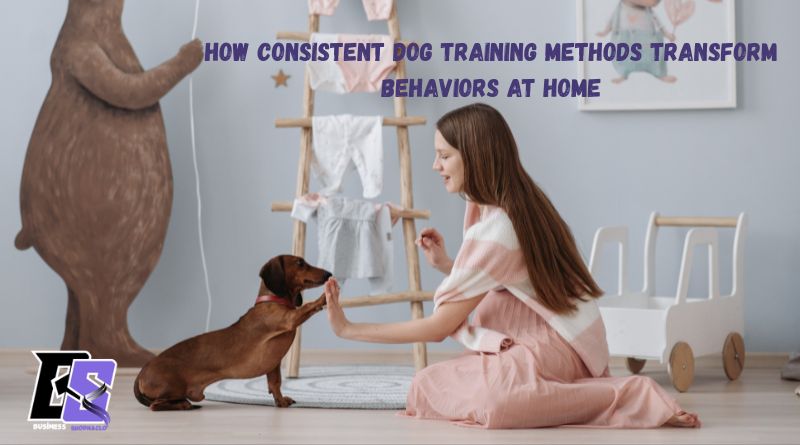How Consistent Dog Training Methods Transform Behaviors at Home
The Power of Consistency in Dog Training
Consistency is a fundamental cornerstone when it comes to shaping a dog’s behavior at home. Just as human habits shape our daily lives, dogs, too, thrive in environments where expectations remain the same. Imagine how confusing it would be if one day you were allowed to sit wherever you wanted, and the next day you were reprimanded for it. This unpredictability is tough on dogs. When families commit to a unified approach—using the same commands, correcting the same behaviors, and establishing clear, unwavering house rules—dogs respond with greater understanding and confidence. For those seeking a structured approach that works across various breeds and behavioral challenges, enrolling in a dog training course Tulsa OK can offer invaluable guidance, arming owners with handy tips to create and maintain a consistent training experience.
Training inconsistency can quickly unravel progress, leading dogs to become uncertain of their boundaries and nervous about what comes next. When everyone in the household adheres to the same vocabulary and routine, however, pets fall into a rhythm, responding more eagerly to training cues and daily requests. This reliability helps to set them at ease, transforming learning from a stressful obligation into a game where success is regularly rewarded. By establishing a strong and predictable environment, pet owners see not only better obedience but also increased trust and calmness in their furry companions.
Building Trust Through Positive Reinforcement
Positive reinforcement is not just a trend—it’s a well-researched, effective way to foster a trusting relationship with your dog. Rather than resorting to punishment, owners who reward their dogs for good choices inspire more frequent positive behaviors. Whether rewards are given in the form of treats, verbal praise, enthusiastic pets, or short play sessions, the message is simple: good things happen when good decisions are made. The American Kennel Club notes that dogs who learn through positive methods tend to be more eager to engage and respond faster to commands.
The foundation of successful training is mutual respect and clear communication. Dogs quickly learn which behaviors delight their owners and which do not, especially when the cues are paired with predictable, thoughtful encouragement. Some owners report dramatic changes in their dogs’ behavior after just a few weeks of praising desirable acts instead of fixating on mistakes. In real-world scenarios, simply acknowledging calm or polite behaviors—such as sitting patiently when guests arrive—can reinforce those habits far more effectively than correction or punishment ever could. The endgame is clear: a dog who feels safe to try, fail, and ultimately succeed develops unwavering trust in their human.
Establishing Routines and Clear Boundaries
Predictable routines serve as stress relief for many dogs, providing a daily structure that makes life less overwhelming and more enjoyable. Dogs learn by association, so feeding at the exact times, walking on consistent schedules, and enforcing clear sleep or play zones send clear signals about what is expected throughout the day. Establishing these regular checkpoints enables dogs to navigate their environment with confidence, leading to faster skill acquisition and greater self-control.
Clear boundaries act as safety nets, preventing confusion over house rules and reducing incidents like counter-surfing or nipping. For example, if a dog is never allowed on the sofa, sticking with this rule every day eliminates the chance for the pet to test those limits or become confused. Even so, it’s not uncommon for owners to try setting boundaries and give up when it feels challenging. The secret to success lies in holding steady; with time, most dogs adapt happily to the structure, finding comfort in knowing exactly where they belong during each part of the day.
Data-Backed Benefits of Early Training
Early intervention is one of the strongest predictors of long-term behavior success in dogs. When puppies or newly rescued adult dogs are introduced to positive, consistent training from the outset, it’s easier to prevent problematic habits and instill desirable ones. Structured routines and early reward-based systems dramatically increase a dog’s adaptability and lay a solid behavioral foundation for life.
The numbers speak volumes: research consistently shows that dogs who receive early, regular training are significantly less likely to develop aggression, fear-based responses, or destructive habits as they age. Communities that prioritize puppy education have reported a reduction of up to 60% in shelter surrenders due to behavioral problems. This statistic underscores the significant impact of learning good habits from the very beginning. According to The Spruce Pets, common issues such as excessive barking, digging, and chewing can often be prevented with early training and intervention, reinforcing the value of addressing behavior proactively rather than reactively. Early training, primarily when anchored in encouragement and predictability, sets pets and their families up for a lifetime of smooth and rewarding companionship.
Breaking Down Behaviors: The Small Habits That Matter
While major milestones—like walking calmly on a leash or always coming when called—stand out, the real magic lies in the small, everyday habits practiced at home. Simple cues, such as asking your dog to “sit” before giving them their food or waiting patiently at the door, reinforce regular cooperation and impulse control. Each of these interactions is an opportunity to strengthen trust, burn off a little energy, and keep your pet’s mind engaged.
These micro-lessons, repeated throughout each day, become a quiet yet powerful language between owner and dog. Over time, you’ll notice your pet anticipating routines, offering behaviors before being asked, and responding more quickly to gentle guidance. Even the busiest families can find a handful of moments each day to pause and encourage a sit-down or a touch. Like building blocks, these interactions strengthen your dog’s skills and create a home environment defined by calm collaboration rather than chaos and correction.
Common Challenges and Tips for Overcoming Them
- Patience is essential: Not every dog learns at the same rate. Some individuals require extra time and numerous repetitions to grasp cues. If you notice frustration building during training, it’s okay to step back, take a deep breath, and keep sessions short and upbeat.
- Keep your cues clear: Use the exact words and body language for commands to avoid confusing your dog. For instance, always using “down” for lying down instead of alternating between “down” and “lay” ensures your pet can reliably link the cue to the action.
- Everyone should participate: Training will progress more quickly and smoothly if everyone in the house is on the same page. Sharing the rules and commands with housemates and family members prevents accidental sabotage of your dog’s training.
- Control the environment: Start new lessons in quiet spaces with few distractions. As your pet masters each skill, gradually introduce more variables—such as the TV, different noises, or other pets—to test and anchor those lessons in real life.
Making Training Part of Everyday Life
Integrating training into your daily rhythm doesn’t have to be a daunting chore. Every interaction—from asking for a sit before walks to calmly rejecting unwanted behaviors at the dinner table—sends a message to your dog. These repeated patterns add up quickly, leading to better manners, deeper trust, and a more enjoyable relationship overall.
Ultimately, the keys to exceptional behavior are within reach for every family. Through patience, steady routines, and encouragement, owners create healthy expectations and a peaceful home. Science, expert recommendations, and countless real-life experiences make one thing clear: adopting consistency in your training style is a rewarding investment that transforms both your dog’s behavior and your bond together.
read also this: mrmostein com: A Comprehensive Look into the Platform




